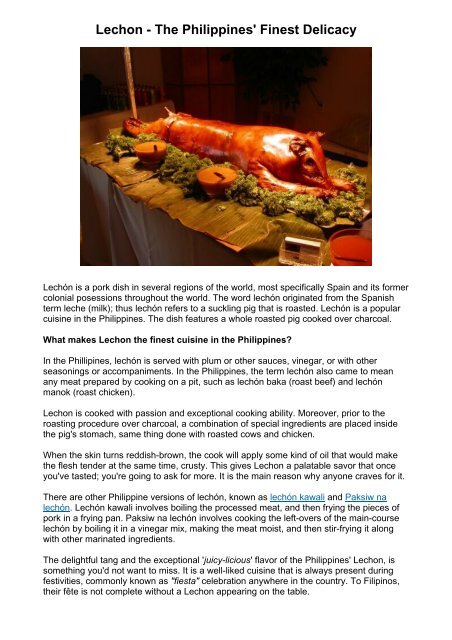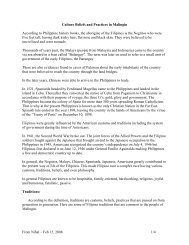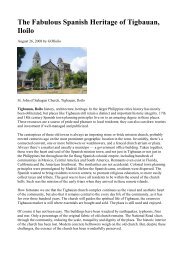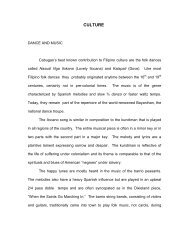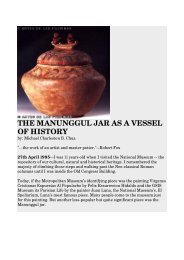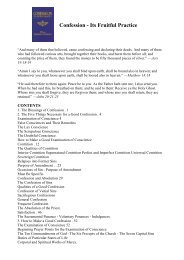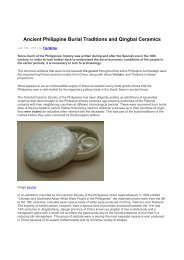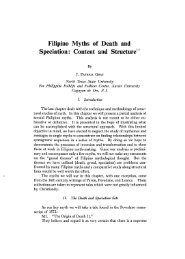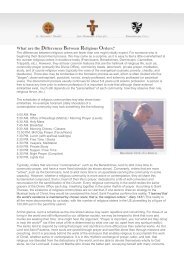Lechon - The Philippines' Finest Delicacy - Philippine Culture
Lechon - The Philippines' Finest Delicacy - Philippine Culture
Lechon - The Philippines' Finest Delicacy - Philippine Culture
- No tags were found...
Create successful ePaper yourself
Turn your PDF publications into a flip-book with our unique Google optimized e-Paper software.
<strong>Lechon</strong> - <strong>The</strong> <strong><strong>Philippine</strong>s'</strong> <strong>Finest</strong> <strong>Delicacy</strong><br />
Lechón is a pork dish in several regions of the world, most specifically Spain and its former<br />
colonial posessions throughout the world. <strong>The</strong> word lechón originated from the Spanish<br />
term leche (milk); thus lechón refers to a suckling pig that is roasted. Lechón is a popular<br />
cuisine in the <strong>Philippine</strong>s. <strong>The</strong> dish features a whole roasted pig cooked over charcoal.<br />
What makes <strong>Lechon</strong> the finest cuisine in the <strong>Philippine</strong>s<br />
In the Phillipines, lechón is served with plum or other sauces, vinegar, or with other<br />
seasonings or accompaniments. In the <strong>Philippine</strong>s, the term lechón also came to mean<br />
any meat prepared by cooking on a pit, such as lechón baka (roast beef) and lechón<br />
manok (roast chicken).<br />
<strong>Lechon</strong> is cooked with passion and exceptional cooking ability. Moreover, prior to the<br />
roasting procedure over charcoal, a combination of special ingredients are placed inside<br />
the pig's stomach, same thing done with roasted cows and chicken.<br />
When the skin turns reddish-brown, the cook will apply some kind of oil that would make<br />
the flesh tender at the same time, crusty. This gives <strong>Lechon</strong> a palatable savor that once<br />
you've tasted; you're going to ask for more. It is the main reason why anyone craves for it.<br />
<strong>The</strong>re are other <strong>Philippine</strong> versions of lechón, known as lechón kawali and Paksiw na<br />
lechón. Lechón kawali involves boiling the processed meat, and then frying the pieces of<br />
pork in a frying pan. Paksiw na lechón involves cooking the left-overs of the main-course<br />
lechón by boiling it in a vinegar mix, making the meat moist, and then stir-frying it along<br />
with other marinated ingredients.<br />
<strong>The</strong> delightful tang and the exceptional 'juicy-licious' flavor of the <strong><strong>Philippine</strong>s'</strong> <strong>Lechon</strong>, is<br />
something you'd not want to miss. It is a well-liked cuisine that is always present during<br />
festivities, commonly known as "fiesta" celebration anywhere in the country. To Filipinos,<br />
their fête is not complete without a <strong>Lechon</strong> appearing on the table.
<strong>Lechon</strong>, also known by the locale as "Litson" or “Inasal” (Cebuano), is a traditional delicacy<br />
served on special events and occasions like Christmas Eve, birthdays, not to mention the<br />
fiesta celebration.<br />
"Litson" is a Spanish term, which means 'suckling pig'. Hence, the original variety is a<br />
roasted pig, popularly known as Litsong Baboy. Originally, it is skillfully cooked by impaling<br />
a whole pig in a bamboo spear and roasts it with the use of charcoal.<br />
At present, <strong>Lechon</strong> does not only refer to a roasted pig, but also denotes a roasted cow or<br />
chicken. Hence, the three main <strong>Lechon</strong> varieties are served anywhere in the country,<br />
namely: Litsong Baka, Litsong Manok and Litsong Baboy.


